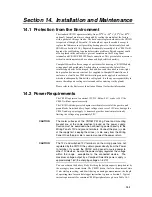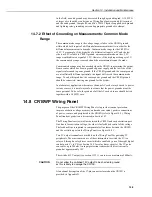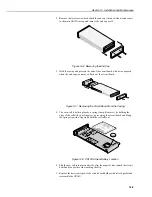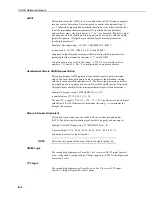
A-1
Appendix A. Glossary
ASCII
Abbreviation for American Standard Code for Information Interchange
(pronounced ‘askee’). A specific binary code of 128 characters represented by
7-bit binary numbers.
Asynchronous
The transmission of data between a transmitting and a receiving device occurs as a
series of zeros and ones. For the data to be ‘read’ correctly, the receiving device
must begin reading at the proper point in the series. In asynchronous
communication, this co-ordination is accomplished by having each character sur-
rounded by one or more start and stop bits which designate the beginning and
ending points of the information (see also Synchronous).
Baud Rate
The speed of transmission of information across a serial interface, expressed in
units of bits per second. For example, 9600 baud refers to bits being transmitted
(or received) from one piece of equipment to another at a rate of 9600 bits per
second. Thus, a 7-bit ASCII character plus parity bit plus 1 stop bit (total 9 bits)
would be transmitted in 9/9600 sec. = .94ms or about 1000 characters/sec. When
communicating via a serial interface, the baud rate settings of two pieces of
equipment must match each other.
Data Point
A data value which is sent to Final Storage as the result of an Output Instruction.
Strings of data points which are output at the same time make up Output Arrays.
Execution Interval
The time between initiating each execution of a given Program Table. If the exe-
cution interval is evenly divisible into 24 hours (86400 seconds), the execution
interval is synchronised with 24-hour time, so that the table is executed at mid-
night and every execution interval thereafter. The table will be executed for the
first time at the first occurrence of the execution interval after compilation. If the
execution interval does not divide evenly into 24 hours, execution starts on the
first even second after compilation.
Execution Time
The time required to execute an instruction or group of instructions. If the execu-
tion time of a Program Table exceeds the table’s execution interval, the Program
Table will be executed less frequently than programmed.
Final Storage
That portion of memory allocated for storing Output Arrays. Final Storage is
configured as a ring memory, with the newest data being written over the oldest.
Data in Final Storage can be displayed using the *7 Mode or sent to various
peripherals.
















































